How American Abrams tanks devastated Russian tanks in Iraq
- By Alex Hollings
Share This Article
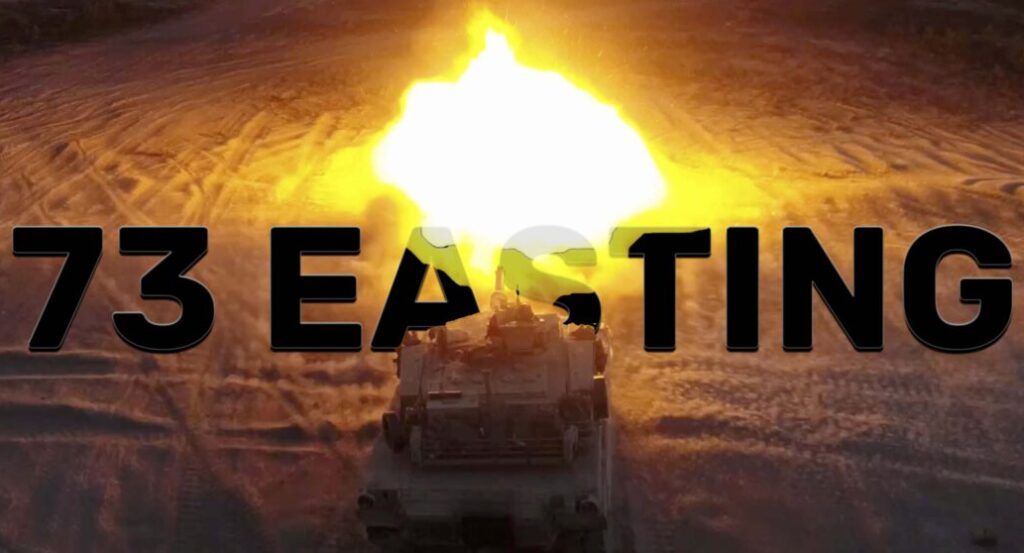
With 31 M1 Abrams main battle tanks now headed for Ukraine, there’s been a great deal of discussion about how these armored behemoths will fare against the Russian tanks they were originally designed to square off against. Fortunately, this won’t be the first time American Abrams will find themselves sighting in on dated Soviet-era armor, and few interactions better reflect this power mismatch than the legendary Battle of 73 Easting of the Persian Gulf War.
The Battle of 73 Easting is often referred to as one of the great tank battles of the 20th century, with just nine M1A1 Abrams tanks, 13 M3A2 Bradley Fighting Vehicles, and 120 American soldiers squaring off against a much larger force of well-trained Iraqi Republican Guard Tawakalna and 10th Armored Divisions.
To make matters worse for the numerically inferior American forces, the Iraqi troops and armor were embedded in a defensive posture, just waiting for the chance to sink their teeth into the as-yet unproven American tanks. When the fighting began, however, a combination of sound military strategy employed by a then-28-year-old H.R. McMaster and superior military technology laid waste to the Iraqi forces, proving unequivocally that the one-two punch of M1 Abrams main battle tanks and M3A2 Bradley fighting vehicles were more than just effective in the fight. They were downright devastating.
The Gulf War
But before we dive into what happened in the Battle of 73 Easting, we first need to temper our analysis with the appropriate context. The Persian Gulf War was a massive military operation led by the United States and supported by a coalition of some 35 countries. With more than 3,100 M1 tanks in the region, America’s gas-guzzling turbine-powered Abrams benefitted from the massive logistical might of the U.S. and its allies while operating under an airspace dominated by coalition fighters.
And that matters all the more when discussing the combat capabilities of the Abrams, which famously requires around 10 gallons of fuel just to start up and burns through between two and 10 gallons of fuel per mile depending on how it’s being operated. America’s M1 Abrams main battle tanks were designed specifically with a European war in mind, namely to counter advanced new tanks being fielded by the Soviet Union by the 1970s. But they were also designed to be operated by the wealthiest country on the planet with a robust global supply chain.
In other words, the Abrams is a technologically advanced war machine that works best when used by a country with a mountain of cash to burn and the air superiority required to maintain hardy supply lines.
The mighty M1 Abrams

Four decades after entering service, America’s M1 Abrams main battle tanks have stayed relevant thanks to a steady stream of upgrades and improvements incorporated over the years.
Today’s latest Abrams, the M1A2 SEPV3, is among the most advanced and capable armored systems on the planet, equipped with an M256 120mm smoothbore cannon with an M240 machine gun mounted coaxially alongside it and another 12.7mm machine gun operated via the common remotely operated weapon system (CROWS) to boot. It finds its targets using forward-looking infrared (IFLIR) optics and carries an electronic warfare system along with a variety of both active and passive defensive measures.
But advanced as today’s newest Abrams may be, even the American tanks leveraged in 1991’s Gulf War were technologically miles ahead of the Soviet-era T-72s and T-62s operated by the Iraqi military. And, more than a year into Russia’s invasion of Ukraine, these are the same tanks being operated in large numbers by Russian forces today.
As such, the Battle of 73 Easting, which saw a small force of American Abrams and Bradley’s square off against a numerically superior and dug-in Iraqi unit, can give us some interesting insight into just how the Abrams compares to Russian armor in the field.
Related: Upgrade aims to slim down the insanely heavy Abrams tank
Contending with an American-trained Iraqi commander

On 26 February 1991, Captain H.R. McMaster’s Eagle Troops, comprised of nine M1A1 Abrams tanks, 12 M3A2 Bradley Fighting Vehicles, and 120 infantry troops were ordered to advance Eastward toward embedded Iraqi positions. While they would normally be aided by advancing scout helicopters and air support provided by tank-busting aircraft like A-10 Thunderbolt IIs, a massive sandstorm in the area not only drastically limited visibility, but it left American airpower grounded.
McMaster’s orders were clear: advance as far as 67 Easting, or the 67th-kilometer longitude east of the coalition forces’ campaign map center line, in an effort to identify Iraqi defensive positions without being drawn into a direct engagement. Once McMaster’s Eagle Troop found Iraqi armor, they were to report their position and wait for the full might of heavy reinforcements to close in from their rear.
Unbeknownst to McMaster and his men, they were just a bit north of a road running parallel to their advance, stretching from east to west, and that road led directly into an Iraqi military training ground occupied by a brigade of Iraq’s Tawakalna Division with elements of the 10th Armored Division, both among the nation’s most well trained and well equipped armored units. The Iraqi troops had been given orders to halt the American advance, and they’d dug for a fight.
“The enemy commander, Major Mohammed, and his soldiers knew the ground well. The unit had used the village for billets as they conducted live fire training. Mohammed, who graduated from the Infantry Officer Advanced Course at Fort Benning, Georgia thought it was the ideal ground from which to defend,” McMaster later wrote in his recounting of the battle to come.

The Iraqi forces may have had the advantage of fortified defensive positions, but they’d made a serious tactical error. Navigating the featureless Iraqi desert usually meant being reliant on following roads to avoid getting lost, but the advanced American Abrams and Bradleys were equipped with modern global positioning systems that allowed them to navigate freely. The unaware Iraqi commander had oriented defenses toward the road, but Eagle Troop was approaching from a few kilometers north of it, granting them some degree of surprise.
Despite their placement, McMaster spoke highly of Major Mohammed’s defensive strategy. He’d fortified the village with ZSU-23-4 “Shilka” radar-guided anti-aircraft weapon systems, orienting their four massive 23 mm autocannons parallel to the horizon, intent on using them to tear through land-based armor instead of jets. He positioned dozens of tanks and BMPs throughout the defensive position with hundreds of infantry troops scattered between them in bunkers and hastily dug trenches.
The plan was to make the village itself a hornet’s nest of defensive power, forcing the advancing American armor to scatter to the north and south of the village, where he’d placed mines to stop their advance and oriented heavy fires to lay waste to the Abrams and Bradleys once they were stopped. He then positioned another 18 T-72 main battle tanks in a circle about three thousand meters farther to the east to quickly respond if the Americans broke through his defensive lines.
Related: How US Special Forces took on Wagner Group mercenaries in an intense 4-hour battle
Eagle Troop engages
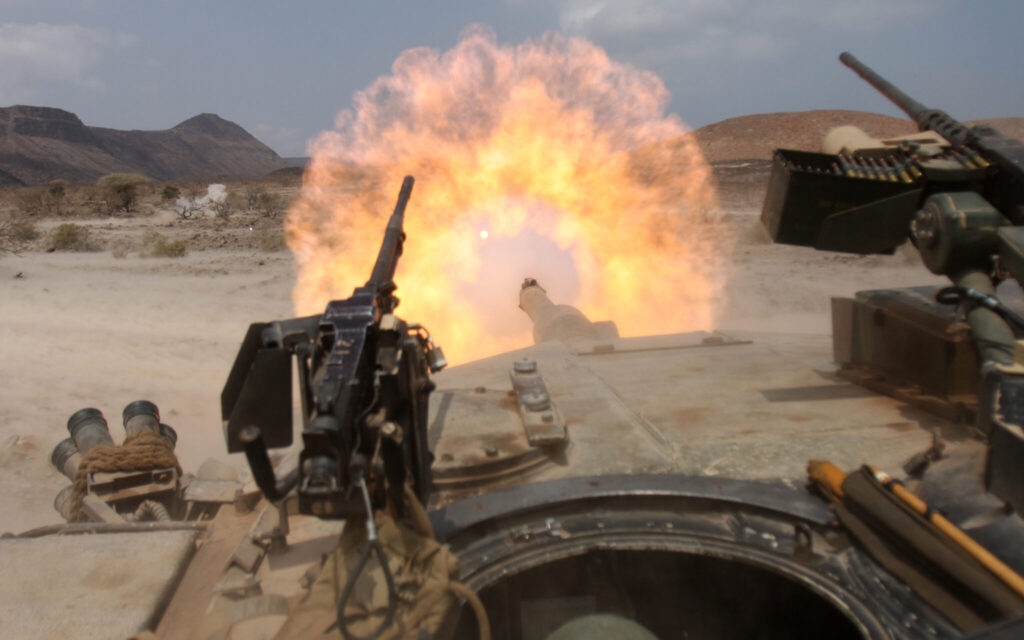
Eagle Troop pressed slowly into the raging sandstorm with its 13 Bradleys leading the way, peering through their infrared sights, and McMaster’s nine Abrams following closely behind. Before long, they came across an Iraqi scout position who promptly surrendered, but not before giving the Iraqi forces notice of the American advance. As Eagle Troop pressed on, they spotted two Iraqi BMPs scouting their position, accompanied by three tanks.
Before the Iraqi armor had an opportunity to react, one of Eagle Troop’s Bradleys halted position and opened fire with a BGM-71 TOW missile, hitting the southernmost tank. Within seconds, the same Bradley fired a second TOW missile, hitting the second tank, before ripping into the third with its 25 mm M242 Bushmaster chain gun.
With Eagle Troops’ attention oriented toward the Iraqi armor to their northeast, Iraqi soldiers holed up in a small group of secluded buildings to the southeast opened fire. McMaster quickly assessed the structures and decided it was unlikely any were civilians sheltering among the attackers. He gave the order for all nine Abrams to open up on the structures with their massive 120mm smoothbore guns, ending the small arms fire as quickly as it started.
Almost immediately after, an explosion ripped out of the ground just short of one of Eagle Troops’ advancing Bradleys. Peering through his infrared optics, the Bradley commander spotted a single T-72 tank about 800 meters ahead. He gave the order to stop as he and a second Bradley returned fire with TOW missiles. In the distance, they watched as the T-72s turret popped off the tank like a jack-in-the-box, a commonplace sight today in the fighting we’ve seen in Ukraine.
Unlike the Abrams, which stores ammunition for its main gun in a rear compartment of the turret, Russian T-72s carry as many as 40 shells in a circle where the turret meets the tank body. As a result, any hit on this area of the tank can lead to a chain reaction in which all the rounds detonate, blowing the turret off of the tank.
With four Iraqi tanks and two BMPs already smoldering, McMaster knew the fight was just beginning.
Related: Please, stop calling these other vehicles tanks
‘Go to tanks lead’

Recognizing that they’d kicked the hornet’s nest, McMaster called out over the radio for Eagle Troop to shift positions.
“Eagle Troop, battle stations. Tanks lead, go to tanks lead,” he ordered.
The 13 Bradleys slowed and McMaster’s nine Abrams pressed ahead in a wedge formation as orders came in for Eagle Troop to press even further forward to 70 Easting. Shortly thereafter, McMaster spotted the beginning of Major Mohammed’s trap: five tanks positioned next to one another, with three more in reserve north of them. The laser range finder in McMaster’s Abrams gave him a read on their distance: 1,420 yards. He gave the order to fire a 41-pound M829A1 armor-piercing sabot round, which carries a depleted uranium, fin-stabilized, penetrator designed specifically to make short work of enemy armor. It hit the first Iraqi tank at nearly 3,500 miles per hour, and within just three seconds, McMaster’s Abrams fired a second sabot round, wiping another T-72 off the scorecard.
The remaining six tanks all opened fire at once, raining 125mm tank rounds down on Eagle Troop as the nine Abrams reached the crest of a small hill. As explosions rang out around him, McMaster came to a terrifying realization.
From his position at the top of the hill, McMaster could see no fewer than 39 more Iraqi tanks, accompanied by 54 armored vehicles and hundreds of infantrymen. Despite being ordered not to become decisively engaged, McMaster’s Eagle Troop was now taking fire, and they were massively outnumbered.
Related: Stop That Tank! This is how Disney contributed to World War II
‘Tell them I’m sorry’
As Eagle Troop realized the scope of their situation, a call came over the radio.
“I know you don’t want to know this right now, but you’re at the limit of advance; you’re at the 70 Easting,” Lieutenant John Gifford called to Captain McMaster.
Advancing any further wouldn’t just be a violation of orders, it could potentially place Eagle Troop too far ahead for reinforcement to reach them in time. With a sizeable enough Iraqi force, it could even lead to the small unit being surrounded. But McMaster also knew that his troops were well within the sights of Iraqi T-72s already. His choice now was to either fight or turn tail and run.
“Tell them we can’t stop. Tell them we’re in contact and we have to continue this attack. Tell them I’m sorry,” McMaster replied.
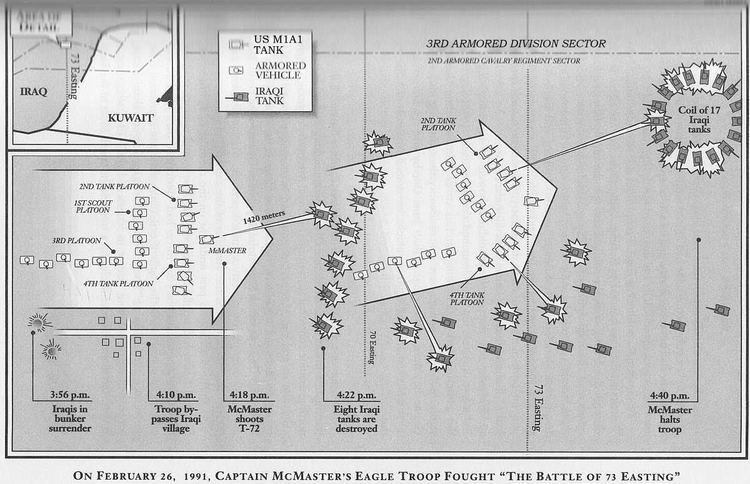
As explosions continued to hail down over Eagle Troop, they pressed forward aggressively, with all 13 Bradleys and all nine Abrams firing. By the time Eagle Troop reached the enemy lines, they’d already wiped out 15 T-72s.
The ZSU-23-4 anti-aircraft system opened fire with its quad-23mm cannons, but was quickly neutralized by one of the Bradleys firing a TOW missile. Other Bradleys took on the infantry positions, opening up with their M240 machine guns and 25mm Bushmaster chain guns.
Despite the American armor’s superior infrared optics, the Iraqi forces were still managing to land hits against Eagle Troop. But even when the 125mm smoothbore main guns of the T-72s scored direct hits on the Chobham composite armored fronts of the Abrams, the rounds simply bounced off.
As Eagle Troop pressed further into the Iraqi lines, they spotted the formation of T-72s held in reserve. Their close proximity to one another made targeting that much easier, and Eagle Troop destroyed the entire formation in just a matter of seconds.
Within 23 minutes, Eagle Troop had pressed all the way to 73 Easting and utterly devastated the numerically superior and fortified Iraqi positions. In total, Eagle Troop laid waste to some 47 tanks and 34 armored vehicles, and they’d done it without losing a single vehicle or weapon system themselves.
McMaster’s small Eagle Troop had destroyed an entire Iraqi Republican Guard battalion.
Editor’s Note: This article was originally published in March 2023. It has been edited for republication.
Read more from Sandboxx News
- C-5 Super Galaxy: Anywhere in the world in 24 hours
- The M9 bayonet was dulled by its many problems
- The Long Range Desert Group and the birth of special operations around the world
- Ukraine says it busted a Russian spy ring that was gathering information about its F-16s
- 6 critical questions that will shape the future of Syria
Related Posts
Sandboxx News Merch
-

‘AirPower’ Classic Hoodie
$46.00 – $48.00 Select options This product has multiple variants. The options may be chosen on the product page -

‘Sandboxx News’ Trucker Cap
$27.00 Select options This product has multiple variants. The options may be chosen on the product page -

F-35 ‘Lightning’ Framed Poster
$45.00 – $111.00 Select options This product has multiple variants. The options may be chosen on the product page

Alex Hollings
Alex Hollings is a writer, dad, and Marine veteran.
Related to: Military History
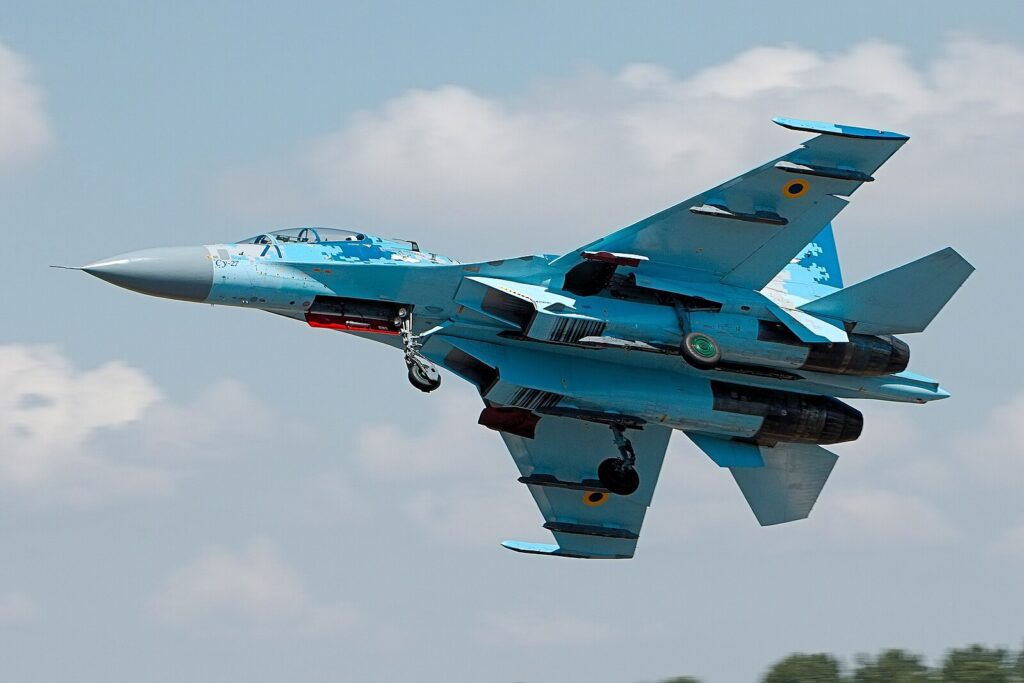
Where do NATO reporting names come from?

How US Special Forces took on Wagner Group mercenaries in an intense 4-hour battle
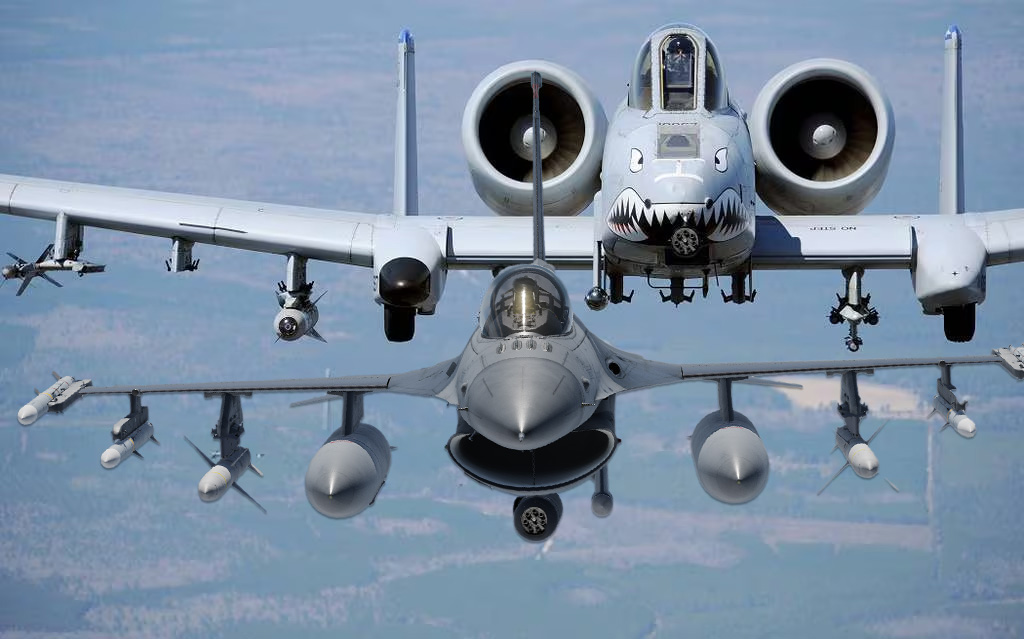
F-16s carrying the A-10’s 30mm cannon actually saw combat
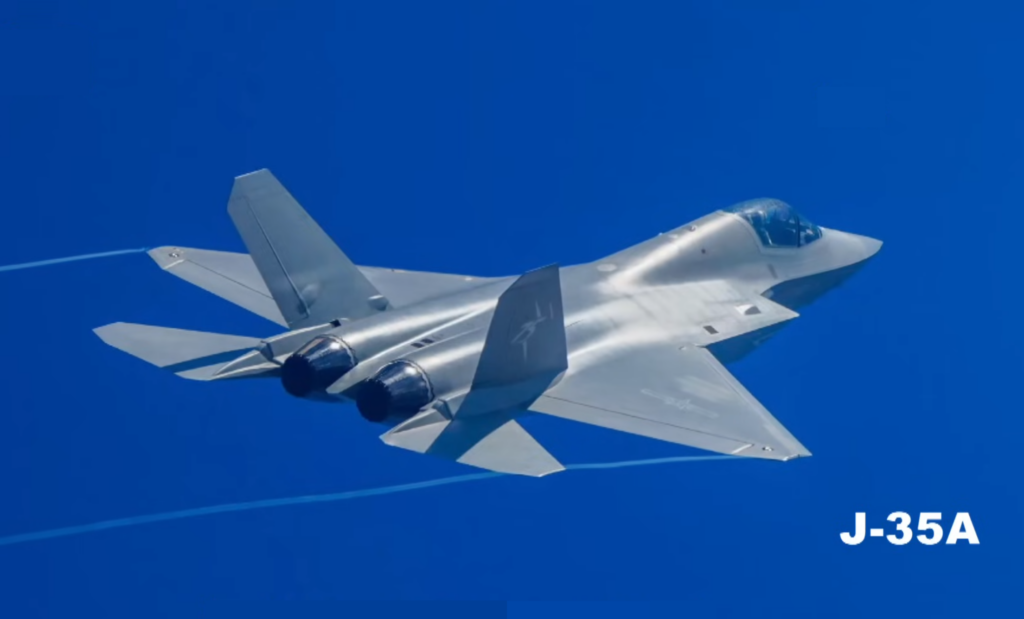
How does China’s new J-35 stealth fighter compare to America’s F-35?
Sandboxx News
-

‘Sandboxx News’ Trucker Cap
$27.00 Select options This product has multiple variants. The options may be chosen on the product page -

‘AirPower’ Classic Hoodie
$46.00 – $48.00 Select options This product has multiple variants. The options may be chosen on the product page -

‘AirPower’ Golf Rope Hat
$31.00 Select options This product has multiple variants. The options may be chosen on the product page -

‘Sandboxx News’ Dad Hat
$27.00 Select options This product has multiple variants. The options may be chosen on the product page
